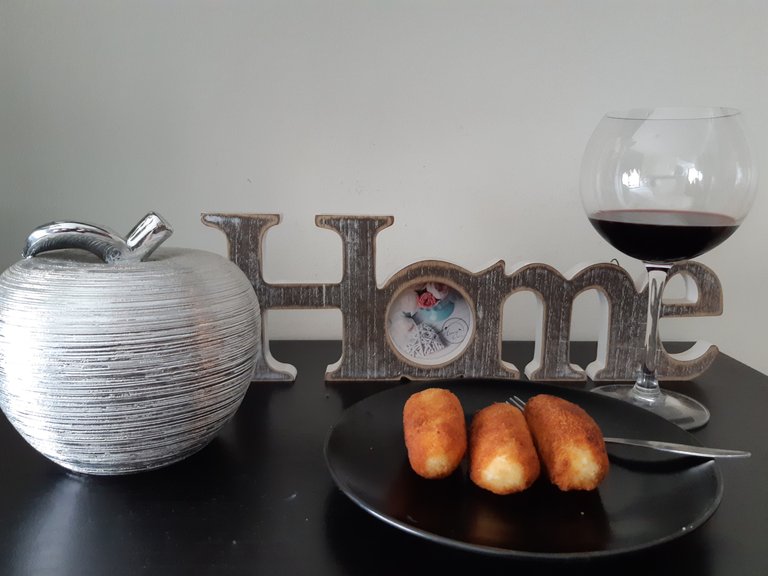
Those who have read me know that, traveling and knowing new flavors, places and customs is one of my great passions. A few months ago I shared a typical United States recipe during the autumn season: Pumpkin Spiced cupcakes, loaded with a unique and very characteristic flavor of that country. Today we will travel to Europe (focusing on France, Spain and the Netherlands) through the wonderful croquettes.
The origin is disputed by several countries, but according to studies and experts in the culinary world, the croquette was born in France. This practical food to make and that children love, has been modified over the years reaching the traditional form that is known today.
La base de este alimento se enfoca en lo mismo en todos los países donde se preparan, solo que cada uno ha adaptado la receta a su gusto. Confieso que conocí esta comida en mi país (muy distante de Europa) hace más de treinta años, a través de una amiga del colegio. Su mamá es española y en una oportunidad que fui a comer a su casa, las probé. La señora le enseñó la receta a mi mamá y luego aprendí a hacerlas, así es que llevo muchos años preparándolas. Actualmente vivo en España y he perfeccionado la técnica ajustándola más a la forma en que se cocina aquí.
Lo primero que se debe tener presente es que, aunque la receta es sencilla, es muy importante que la mezcla de harina, mantequilla y leche quede bien homogénea y con la textura correcta, para que las croquetas queden bien hechas y con ese sensación característica de cremosidad al morderlas.
The basis of this food focuses on the same in all countries where they are prepared, only that each one has adapted the recipe to their taste. I confess that I knew this food in my country (very distant from Europe) more than thirty years ago, through a friend of the school. Her mother is Spanish and on one occasion when I went to eat at her house, I tried them. The lady showed the recipe to my mom and then I learned how to make them, so I’ve been preparing them for many years. I currently live in Spain and have perfected the technique adjusting it more to the way it is cooked here.
The first thing to keep in mind is that, although the recipe is simple, it is very important that the mixture of flour, butter and milk is well homogeneous and with the correct texture, so that the croquettes are well made and with that characteristic sensation of creaminess when biting them.
Para la preparación convencional se necesita una olla normal de mediano tamaño de las que todos tenemos en casa. Yo tengo un ayudante de cocina que me facilita las tareas a la hora de cocinar, porque me reduce los tiempos -generalmente ando muy ocupada- y esta herramienta me permite ahorrar algunos minutos. Sin embargo, en ambos casos el resultado es el mismo. Realizaré la receta en el aparato pero, explicaré el paso a paso que es idéntico si se va preparar en una olla (de hecho, fue la forma en que las preparé durante veinte años).
Uno de los beneficios de esta sencilla comida es que, una vez preparadas pueden congelarse e ir sacando cada porción a medida que las necesitas. Se pueden realizar todas las que desees y dejarlas listas en el congelador durante unos dos o tres meses. La cantidad de croquetas que prepares dependerá de la cantidad de ingredientes que tengas. Para las que hice hoy salen unas veinte croquetas de tamaño pequeño.
No existe una medida exacta para el tamaño que deben tener, pero sí se recomiendan que no sean grandes. La cocción es más rápida y resultan más cómodas para comer. Si se desean hacer medianas (de unos 7 centimetros), también sería adecuado. En España son bastante comunes de encontrar como “tapas” (pasapalos o pica pica) en bares y restaurantes y el tamaño es pequeño (entre 5 y 6 centimetros).
For the conventional preparation you need a normal medium sized pot of which we all have at home. I have a kitchen assistant who makes it easier for me to cook, because it reduces my time -usually I am very busy- and this tool allows me to save some minutes. However, in both cases the result is the same. I will make the recipe in the apparatus but, I will explain the step by step that is identical if it is going to be prepared in a pot (in fact, it was the way in which I prepared them for twenty years).
One of the benefits of this simple meal is that once prepared they can be frozen and go taking out each portion as you need them. You can make as many as you want and leave them ready in the freezer for about two or three months. The amount of croquettes you make will depend on how many ingredients you have. About 20 small-sized croquettes come out today.
There is no exact measure for the size they should have, but they are recommended not to be large. Cooking is faster and more comfortable to eat. If you want to make medium (about 7 centimeters), it would also be appropriate. In Spain they are quite common to find as "tapas" (pasapalos or pica pica) in bars and restaurants and the size is small (between 5 and 6 centimeters).
Otra de las maravillas de esta receta es que se pueden preparar de lo que tengas o te sobre de la nevera. El sabor dependerá del ingrediente principal que tengas a la mano y que le añadas al prepararlas. En España las de jamón ibérico, bacalao y carne son las más populares. Sin embargo, dependiendo de la región puedes encontrarlas más variadas. No importa lo que le pongas (yo las he hecho de verduras, carne molida, merluza, pollo y atún), lo que debes tener claro es que la preparación la elabores de forma correcta. Hoy las haré de pollo. Es un ingrediente bastante común en las cocinas, por eso lo tomaré de base.
Another of the wonders of this recipe is that they can be prepared from whatever you have or you over the fridge. The taste will depend on the main ingredient you have on hand and what you add when preparing them. In Spain, Iberian ham, cod and meat are the most popular. However, depending on the region you can find them more varied. No matter what you put (I have made vegetables, ground meat, hake, chicken and tuna), what you must be clear is that the preparation is made correctly. I’ll make them chicken today. It’s a fairly common ingredient in kitchens, so I’ll take it as a base.
Ingredientes.
200 gramos de pollo (debe estar cocido previamente y desmenuzado).
50 gramos de cebolla
20 mililitros de aceite (del que uses normalmente)
20 gramos de mantequilla (o margarina)
100 gramos de harina todo uso
400 mililitros de leche (yo utilizo entera)
Pimienta (al gusto)
Nuez mozcada (al gusto)
Sal (al gusto)
Pan rallado (para empañizar)
Dos huevos batidos
Ingredients.
200 grams of chicken (must be pre-cooked and shredded).
50 grams of onion
20 milliliters of oil (of which you normally use)
20 grams of butter (or margarine)
100 grams of all-purpose flour
400 milliliters of milk (I use whole)
Pepper (to taste)
Cashew nut (to taste)
Salt (to taste)
Breadcrumbs (for sticking)
Two beaten eggs
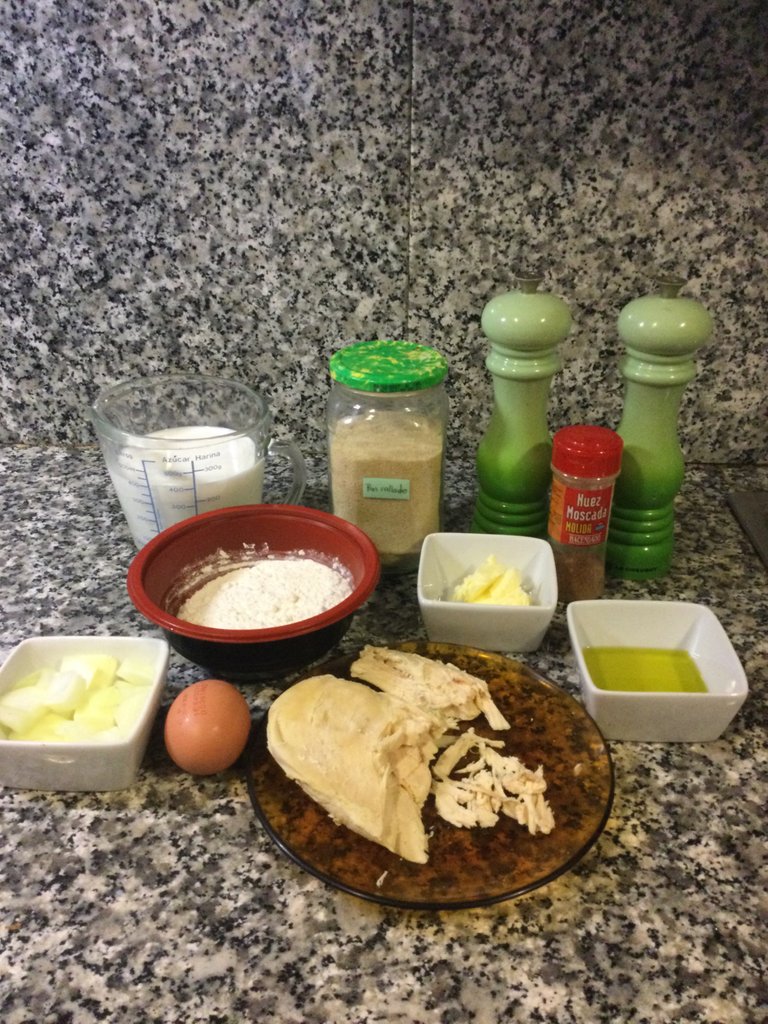
Preparación
En una olla (o recipiente de un ayudante de cocina) colocar la mantequilla y el aceite a temperatura media. Una vez que esté un poco caliente (no demasiado) se añade la cebolla bien troceada, en brunue. Se sofríe unos minutos evitanto que la cebolla se cocine demasiado y se le añade la harina. Remover de forma constante para que el calor la cocine. La textura será compacta semejante a la plastilina, en ese momento añadir la leche, la sal, la pimienta y la núez mozcada y continuar revolviendo. El fuego debe estar entre medio y bajo, de esta forma se irán fundiendo la leche y la harina y a la vez se irán cocinando de forma correcta. No se debe dejar de remover porque la harina se compactará y empezará a pegarse sin estar aún cocida. Esta es la parte que debe hacerse de forma paciente para que las croquetas queden bien y ligeras. Una vez que se observa una mezcla semejante a la bechamel (con cremosidad pero homogénea) se añade el pollo y continuas removiendo unos dos minutos. Se aparta la olla del fuego y la mezcla se coloca en un recipiente (si puede estar un poco húmedo mejor). Cuando el calor de la mezcla haya bajado se coloca en la nevera por una o dos horas. Algunas personas las dejan enfriar pocos minutos y después comienzan a prepararlas. Así lo hice durante años, pero estando en España aprendí que quedan mejor dejándolas en la nevera un tiempo más prolongado.
Preparing
In a pot (or kitchen helper bowl) place butter and oil at medium temperature. Once it is a little hot (not too much) add the onion well chopped, in very thin slices. Fry for a few minutes to prevent the onion from cooking too much and add the flour. Stir constantly for the heat to cook. Texture will be compact similar to clay, at that time to add milk, salt, pepper and nutmeg and to continue stirring slowly. The fire must be between medium and low, in this way milk and flour will melt and at the same time will be cooked correctly. You should not stop stirring because the flour will compact and begin to stick without still being cooked. This is the part that should be done patiently so that the croquettes are well and light. Once a mixture similar to bechamel is observed (with creaminess but homogeneous) add the chicken and continue stirring about two minutes. Remove the pot from the heat and the mixture is placed in a bowl (if it can be a little damp better). When the heat of the mixture has gone down it is placed in the refrigerator for one or two hours.
Some people let them cool for a few minutes and then start preparing them. I did so for years, but being in Spain I learned that they are better left in the fridge for a longer time.
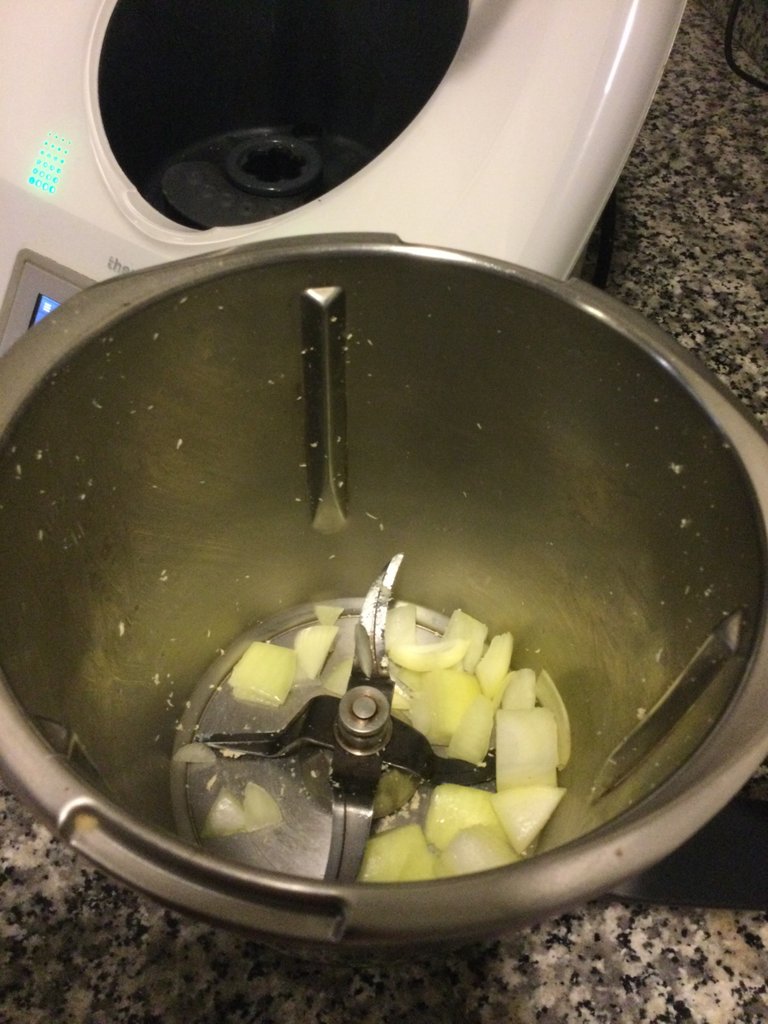 | 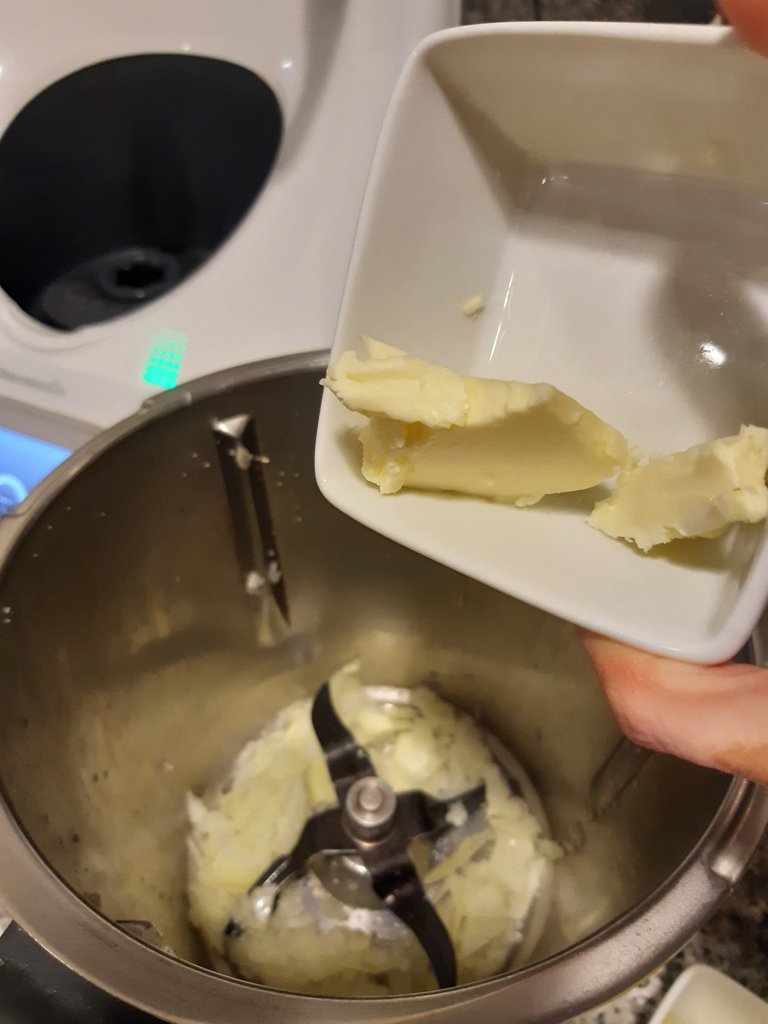 | 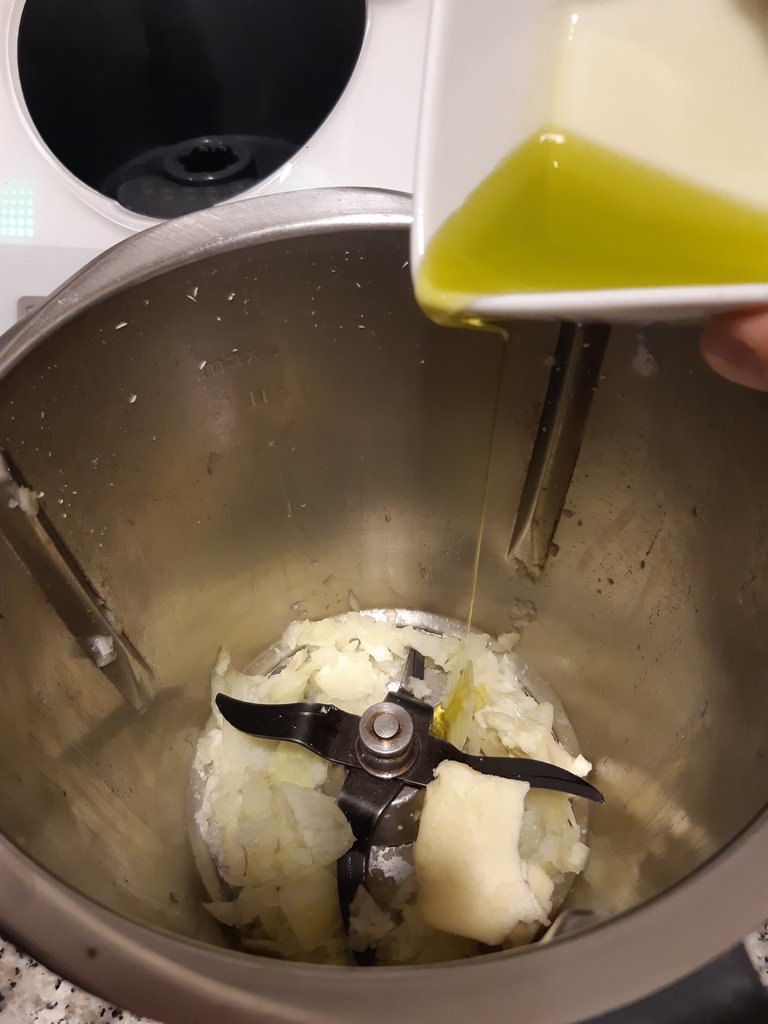 |
|---|
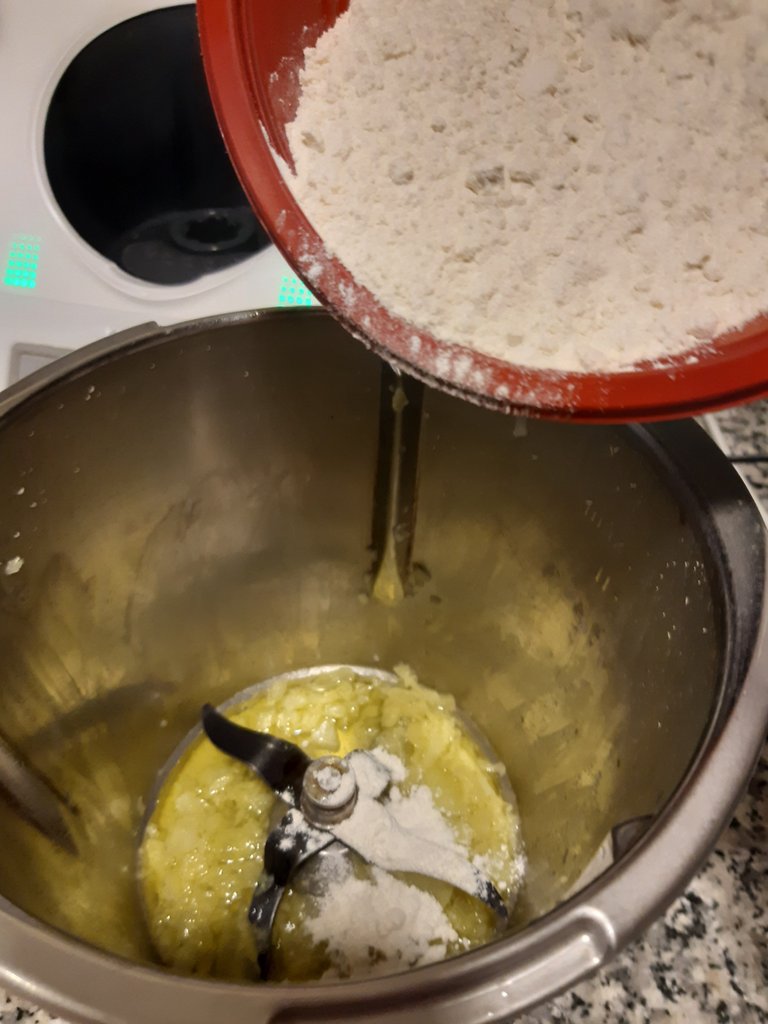 | 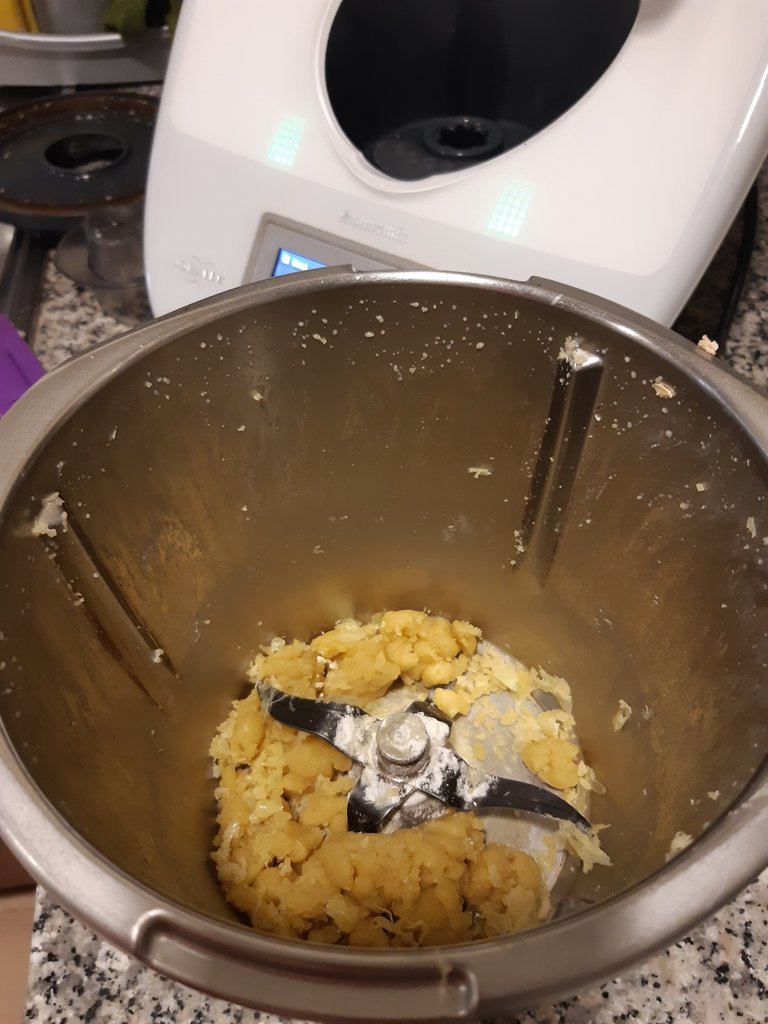 |  |
|---|
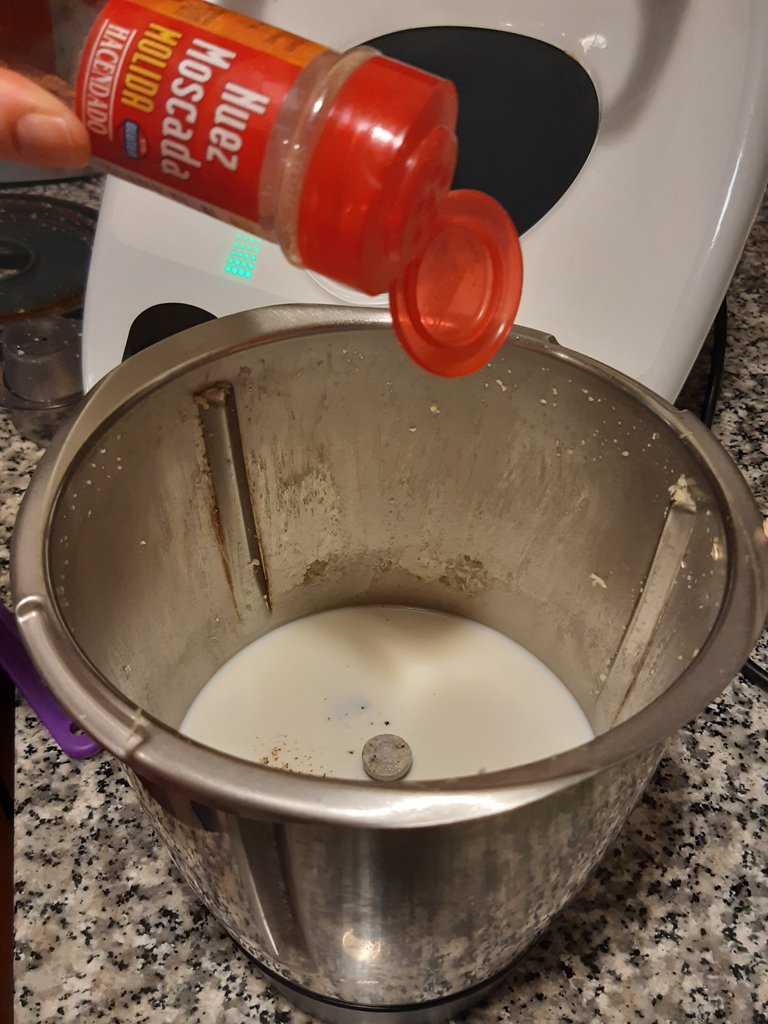 | 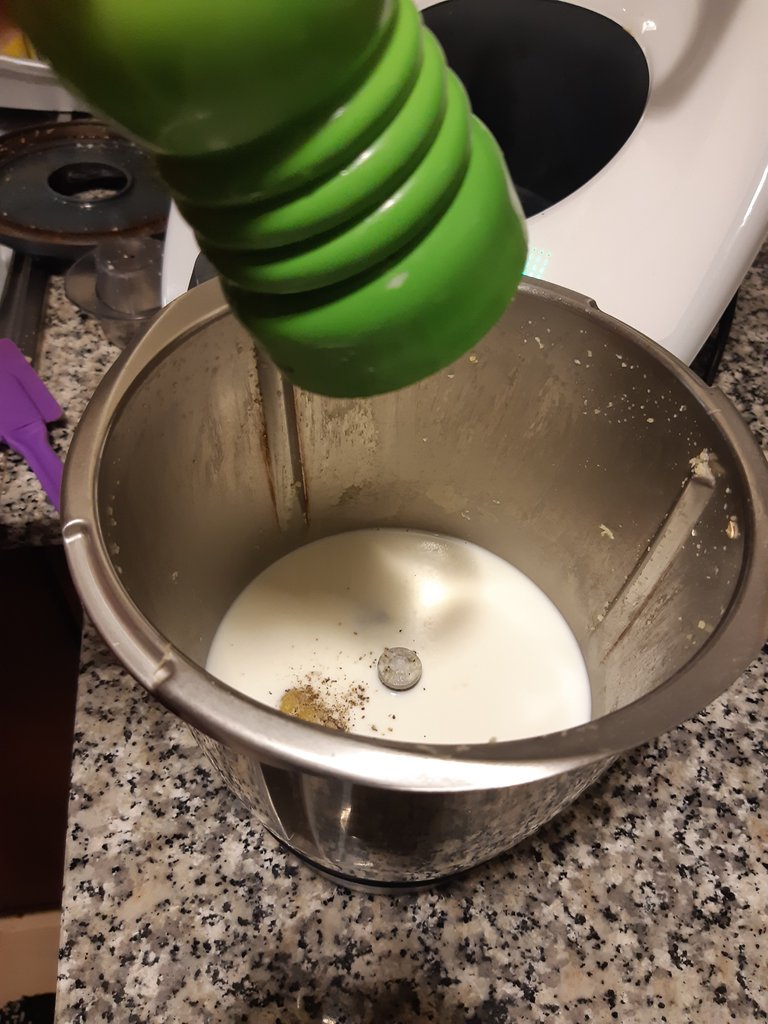 | 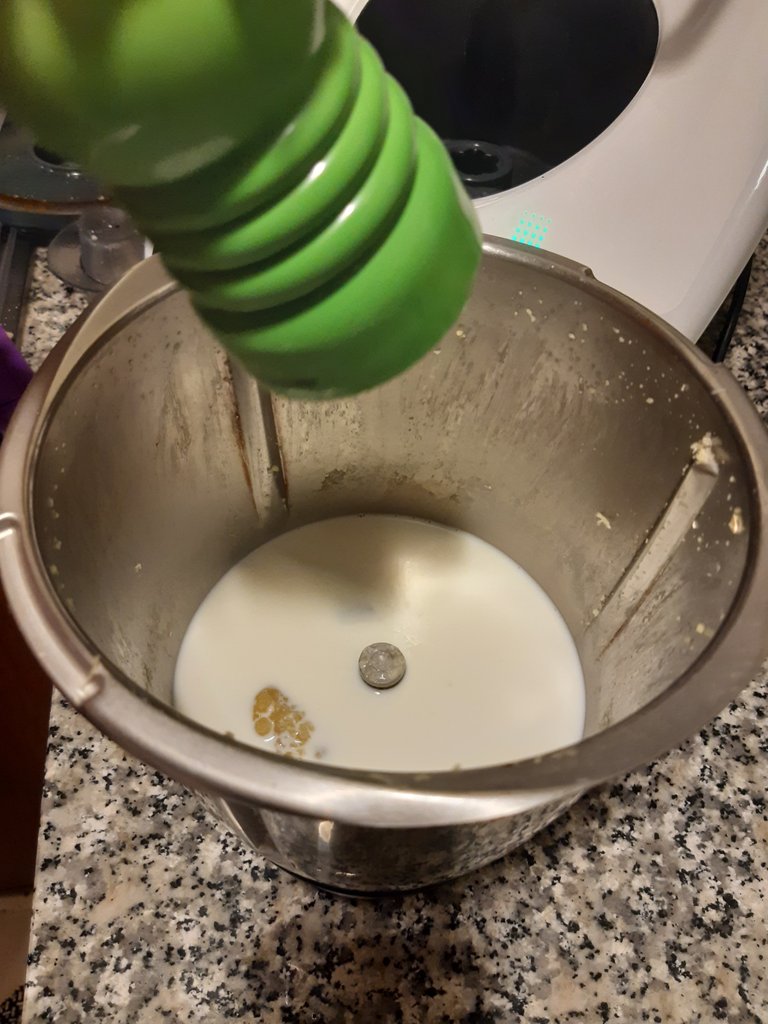 |
|---|
 |  | 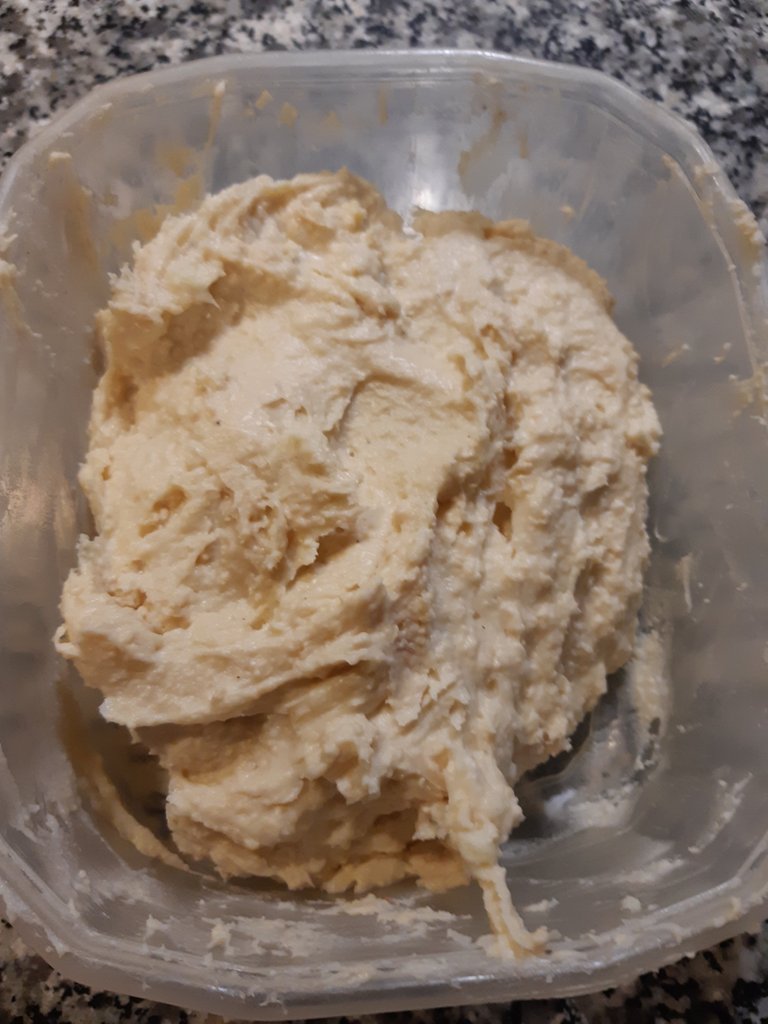 |
|---|
Para darles la forma de croqueta, recomiendo que al sacarlas de la nevera (pasado el tiempo que cada quién desee) se humedezcan un poco las manos antes de tomar una porción de la mezcla, esto ayuda a que no se peguen de los dedos y sea más fácil de trabajarlas. En España, utilizan dos cucharas y van pasando la mezcla de una a la otra, pero yo, en treinta años, no he aprendido esa técnica (¡y lo confieso…je je je!). Luego de ese paso se procede a empañizarlas. En este punto he modificado un poco la receta porque me ha funcionado mejor. Generalmente se utiliza harina, huevo batido y pan rallado, pero, a mi me agrada pasarlas por pan rallado primero, luego huevo batido y al final de nuevo pan rallado. La textura me resulta más agradable. Esto es de libre elección, se pueden realizar de ambas maneras.
Después de empanizar dándole la forma a cada porción de la mezcla, puedes cocinarlas directamente en una olla con aceite caliente (no superar una temperatura media porque pueden quedar crudas por dentro). Yo las coloco en el congelador una noche entera. Al día siguiente, luego de tener el aceite caliente (o la air freire) las sacó y voy friéndolas, girándolas para que se cocinen por todas partes. No hace falta descongelarlas, las puedes sacar y echarlas directamente en el aceite, lo importante es que no coloques demasiadas croquetas juntas en la primera tanda, porque aunque el aceite este caliente, las croquetas al estar congeladas bajarán la temperatura y pueden cocinarse de forma incorrecta. Se deben colocar unas pocas y luego que el aceite se atempere colocar tandas con mayor cantidad. Recuerda no tener el fuego muy alto, debe ser una temperatura media.
To give them the shape of croquette, I recommend that when you take them out of the fridge (after the time that everyone wants) they moisten their hands a little before taking a portion of the mixture, this helps not to stick fingers and easier to work them. In Spain, they use two spoons and they pass the mixture from one to the other, but I, in thirty years, I have not learned that technique (and I confess...Heh, Heh!). After that step, they are breaded. At this point I modified the recipe a little because it worked better. Usually flour, beaten egg and breadcrumbs are used, but, I like to pass them on breadcrumbs first, then beaten egg and at the end again breadcrumbs. The texture is more pleasant for me. This is a free choice, you can do both. After breading to shape each portion of the mixture, you can cook them directly in a pot with hot oil (do not exceed an average temperature because they may be raw inside). I put them in the freezer for a whole night. The next day, after having hot oil (or air frying) took them out and I fry them, turning them to cook everywhere. It is not necessary to defrost them, you can take them out and put them directly in the oil, the important thing is not to place too many croquettes together in the first batch, because even if the oil is hot, croquettes when frozen will lower the temperature and can be cooked incorrectly. A few should be placed and then the oil should be tempered to place more batches. Remember not to have very high fire, it must be an average temperature.
 | 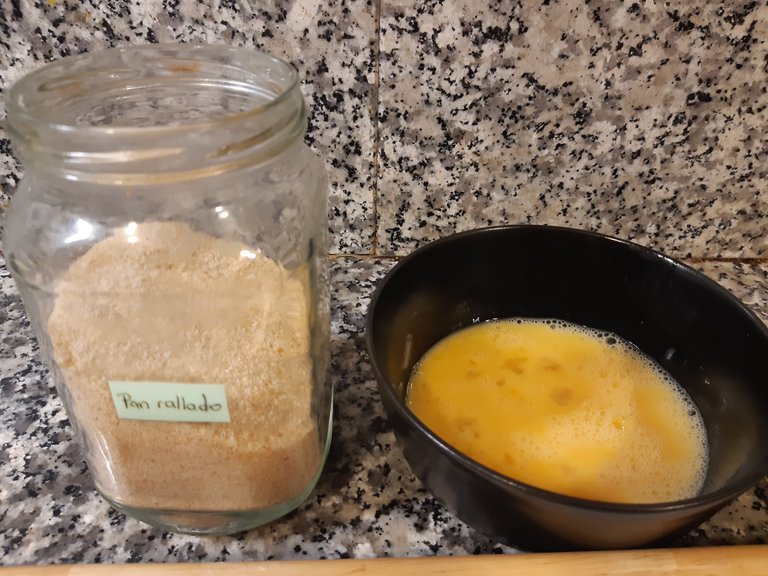 | 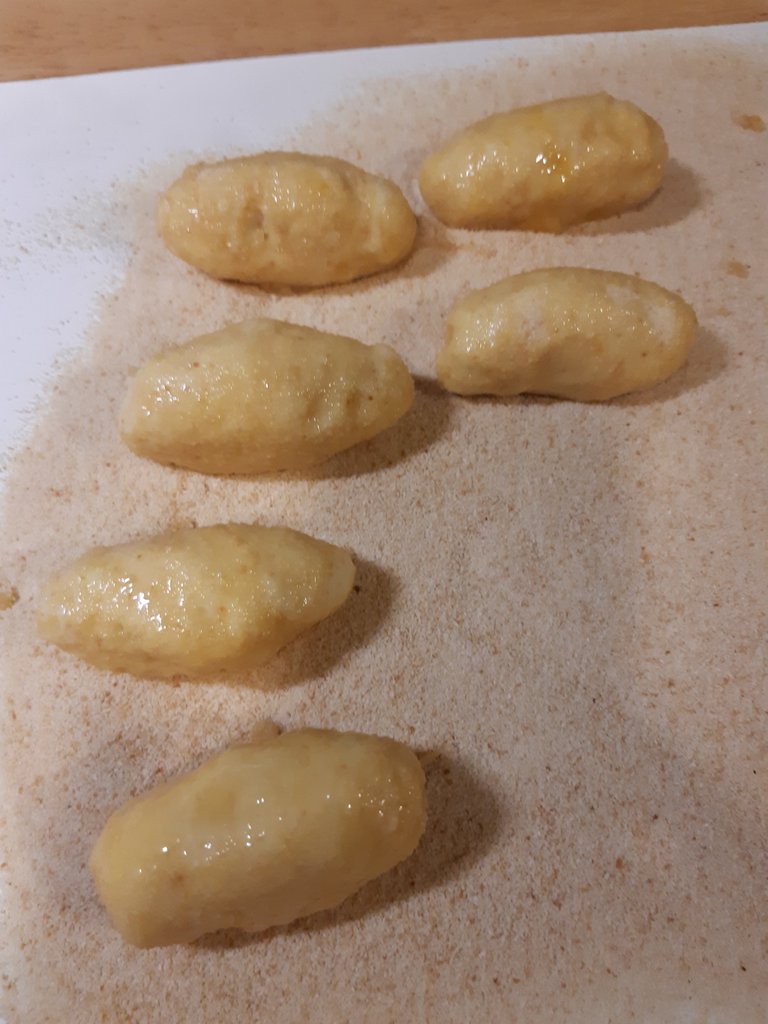 |
|---|
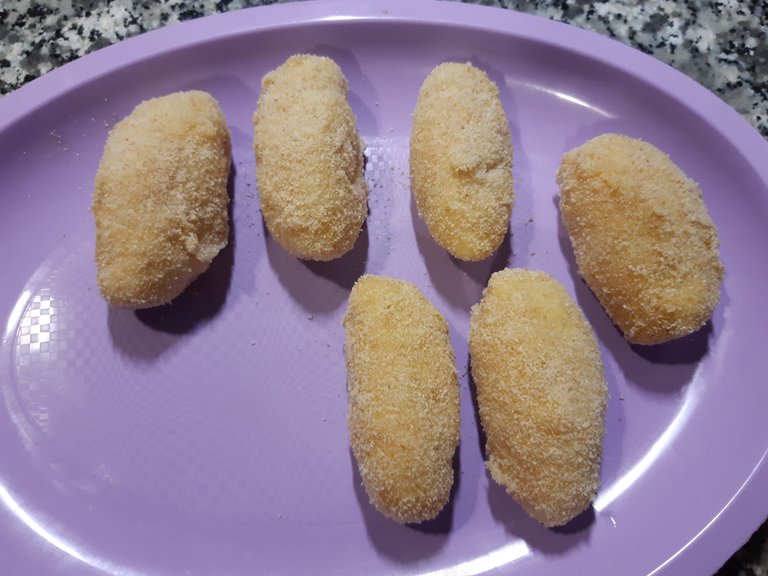 | 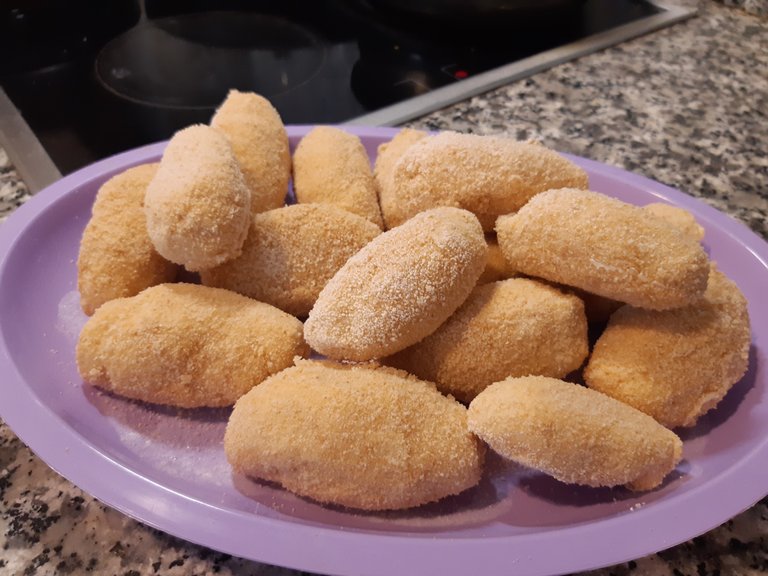 | 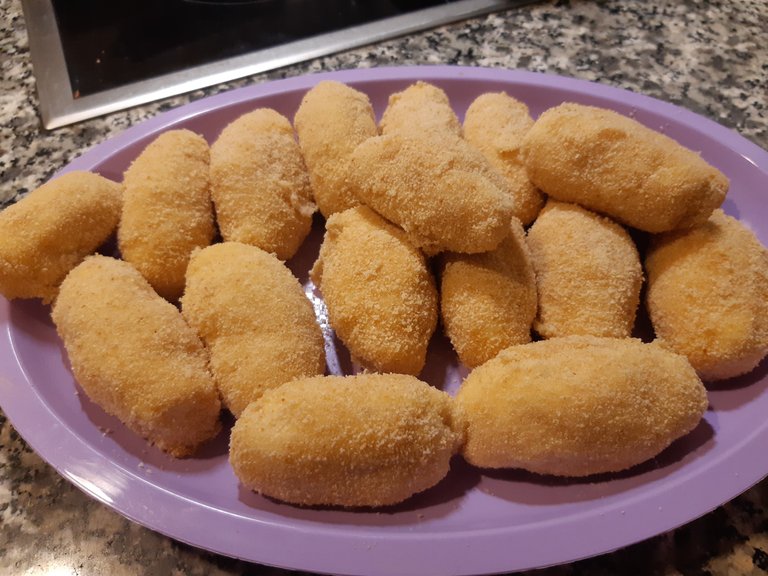 |
|---|
 | 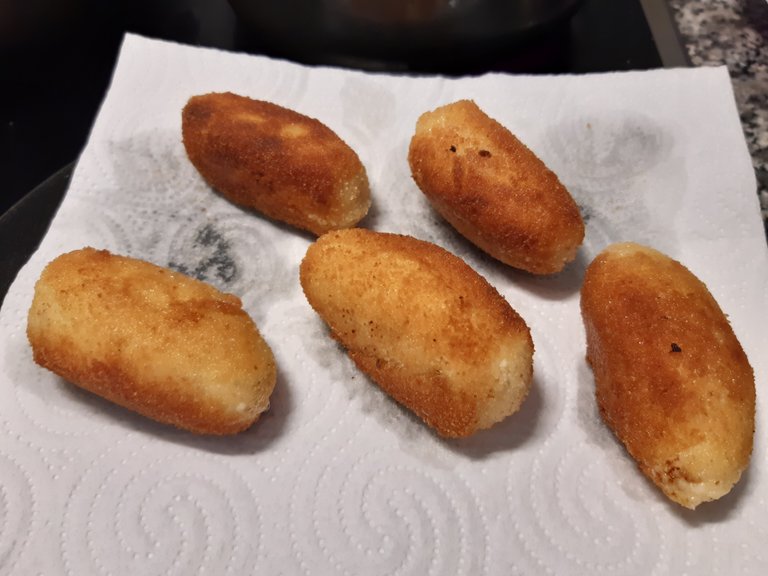 |  |
|---|
Acompáñalas con una buena ensalada, una puré de papas o con lo que prefieras. Es una comida práctica, que puede hacerse en grandes cantidades e ir consumiendo según la necesidad de cada hogar y siempre, son bien recibidas.¡Buen provecho!.
Accompany them with a good salad, mashed potatoes or whatever you prefer. It is a practical meal, which can be made in large quantities and consumed according to the need of each home and always, is welcome. Bon appetite!.
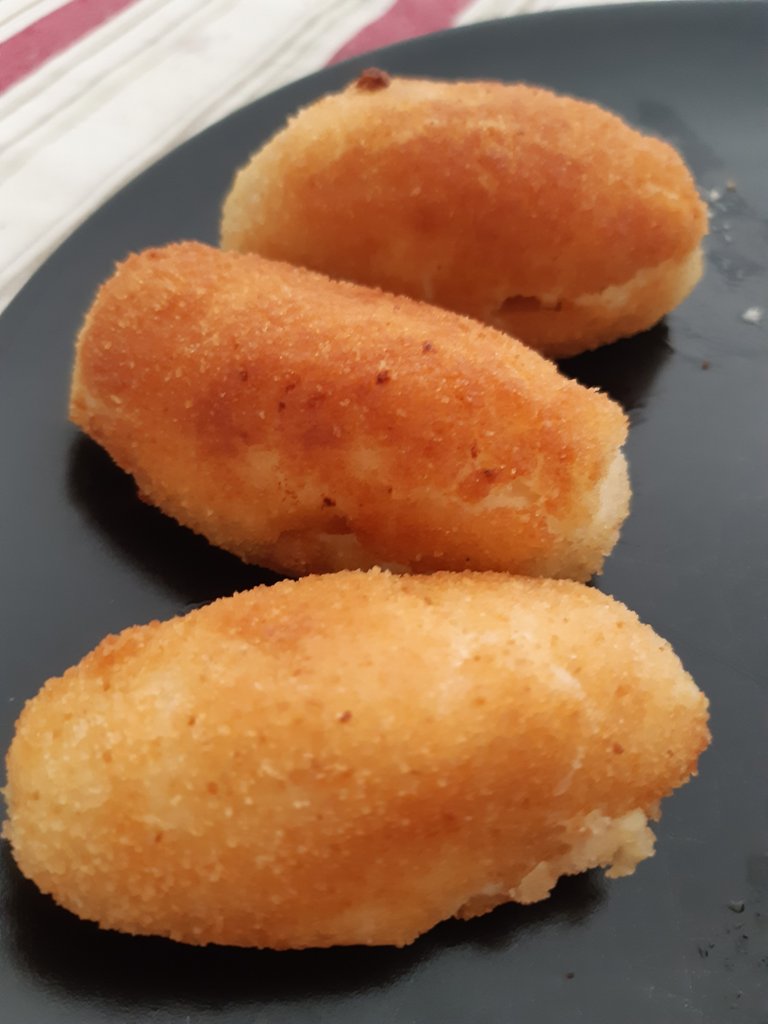 | 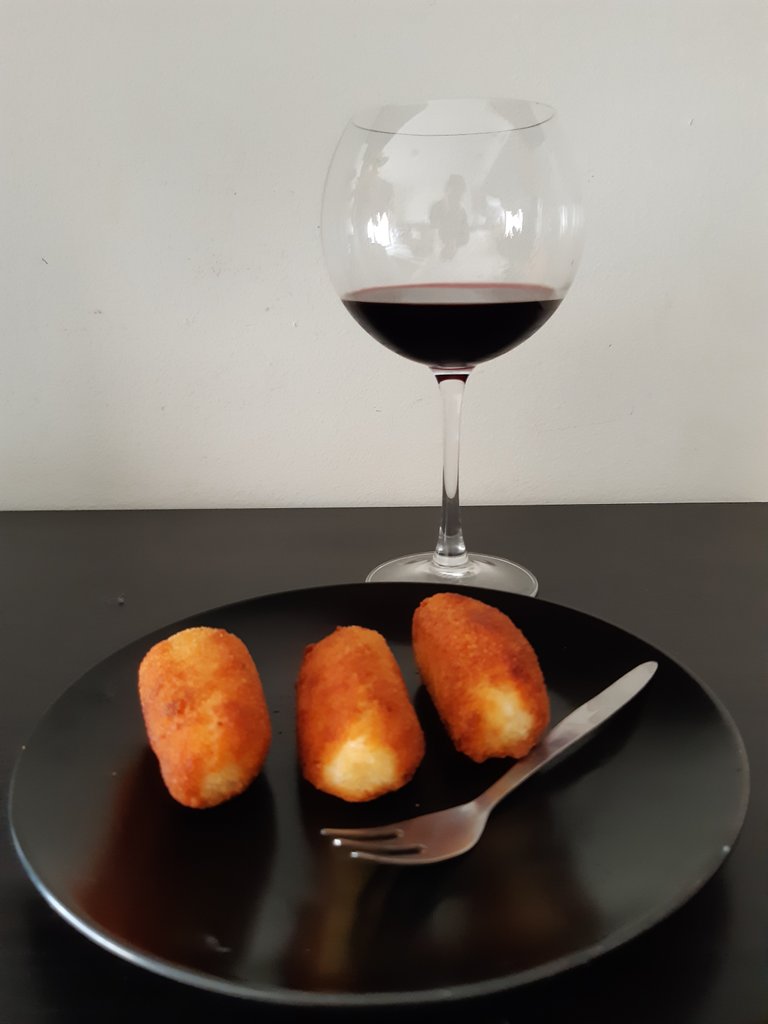 |
|---|
Todas las fotos son de mi propiedad.
All the pictures used are personals.
Congratulations @everivaspazos! You have completed the following achievement on the Hive blockchain And have been rewarded with New badge(s)
Your next target is to reach 20 posts.
You can view your badges on your board and compare yourself to others in the Ranking
If you no longer want to receive notifications, reply to this comment with the word
STOPTo support your work, I also upvoted your post!
Check out our last posts:
Support the HiveBuzz project. Vote for our proposal!
Me encantan las croquetas pero casi nunca las hago en casa, pero estas tienen una pinta estupenda y la receta muy detallada. La guardo para hacerlas.
Anímate a prepararlas, verás que son sencillas de hacer y muy prácticas ;). Saludos.
I love croquettes ❤️❤️❤️
Me too!
Super excelente!!! Receta anotada! A ver que tal! 😊
;)
Caseras, suaves por dentro y crocantes por fuera. Una maravilla.